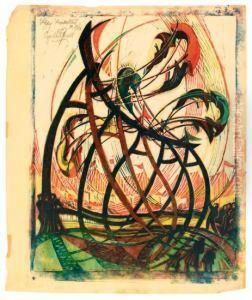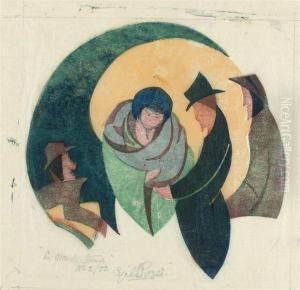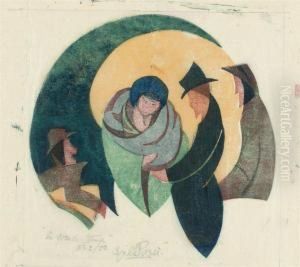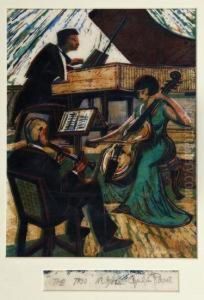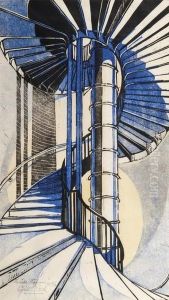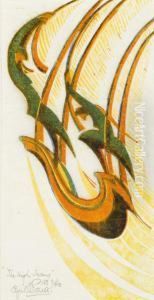Cyril E. Power Paintings
Cyril Edward Power was a notable English artist born on December 17, 1872, in London. His work is widely recognized for its vibrant energy and contribution to the Vorticist movement, even though he was never officially a member. Power initially trained as an architect and served as a draftsman during World War I before fully devoting himself to art.
After the war, Power became deeply involved with the Grosvenor School of Modern Art in London, which became a hub for artists interested in portraying speed and dynamism in their work, a concept that was at the heart of the Vorticist aesthetic. During the 1920s and 1930s, Power produced some of his most enduring works, particularly in the medium of linocut prints, which perfectly conveyed his fascination with movement and the mechanical energy of the modern age. His linocuts often depicted the bustling life of the city, with images of trains, sporting events, and crowds, rendered in a distinctive, rhythmic style that emphasized both motion and the abstract beauty of the machine age.
Power collaborated closely with fellow artist Sybil Andrews, and together they created some of the most iconic prints of the period. His style evolved over the years, and while his earlier work was more figurative, he later moved towards a greater level of abstraction. Power's artistic output was part of the broader British linocut movement, which represented a significant contribution to international modernist printmaking.
Cyril Power's work fell into relative obscurity in the postwar period, overshadowed by newer art movements. However, his contributions have been reassessed and celebrated in more recent times, with exhibitions and research shedding light on his role in the development of modern British art. He continued to work until his death on May 25, 1951, leaving a legacy as a pioneer of modern printmaking and as a key figure in translating the dynamism of the early 20th century into visual art.
